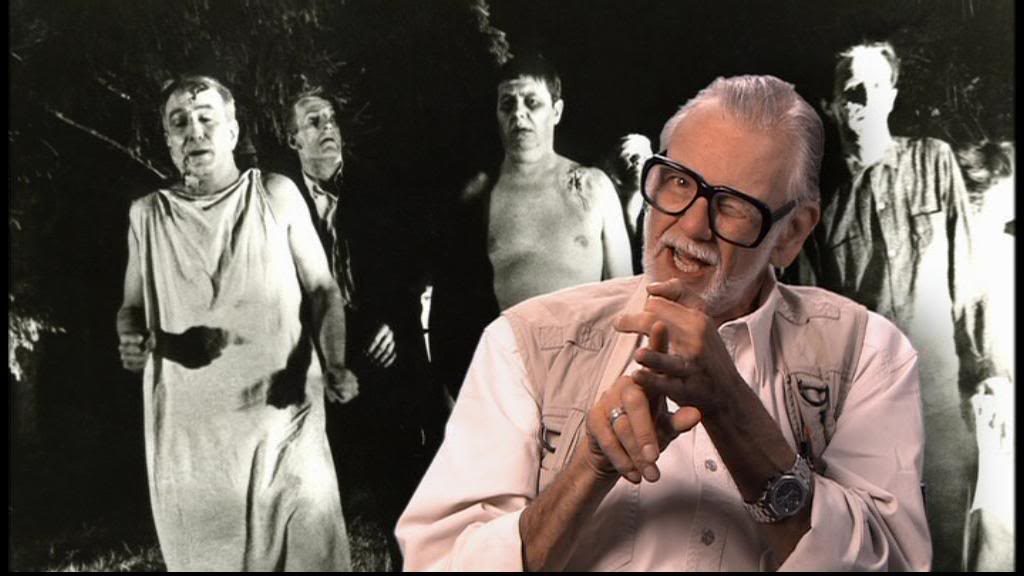Father of the Modern Zombie Dead at 77.
Jim Tudor
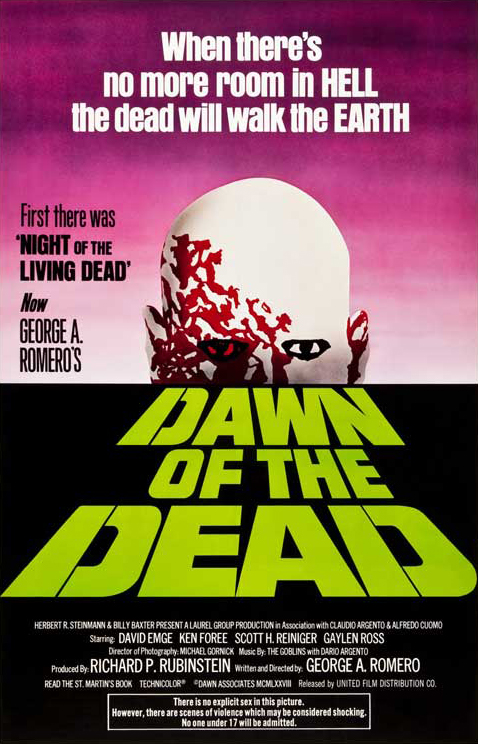 “Start thinking of new ways to kill people. We’re going to make another zombie movie.”
“Start thinking of new ways to kill people. We’re going to make another zombie movie.”
So went the initial correspondence from director George Romero to make-up effects artist Tom Savini, upon getting the green light for 1985’s Day of the Dead. I might be recalling the quote imperfectly, and heck, maybe it was for 1978’s Dawn of the Dead. But considering that Romero himself wasn’t exactly a perfectionist, I’m sure that any fudging can be overlooked. Not just the quote, but the jovial way it was recounted, signal so much of the type of person that Romero was. Darkly humorous, friendly, practical to a tee, and to the bloody point. And there was always a point to whatever Romero was doing – and a gleam in his eye all the while.
People know Romero first and foremost as “the father of the modern zombie”, courtesy of his landmark first feature Night of the Living Dead. Romero would make four very independent feature films before returning to its subject matter – they are the hippy-dippy There’s Always Vanilla (1971), the darkly feminist Season of the Witch (1972), the virus shocker The Crazies (1973, its poster asking “Why are the good people dying?” Why indeed.), and the mentally ill “vampire” classic Martin (1978).
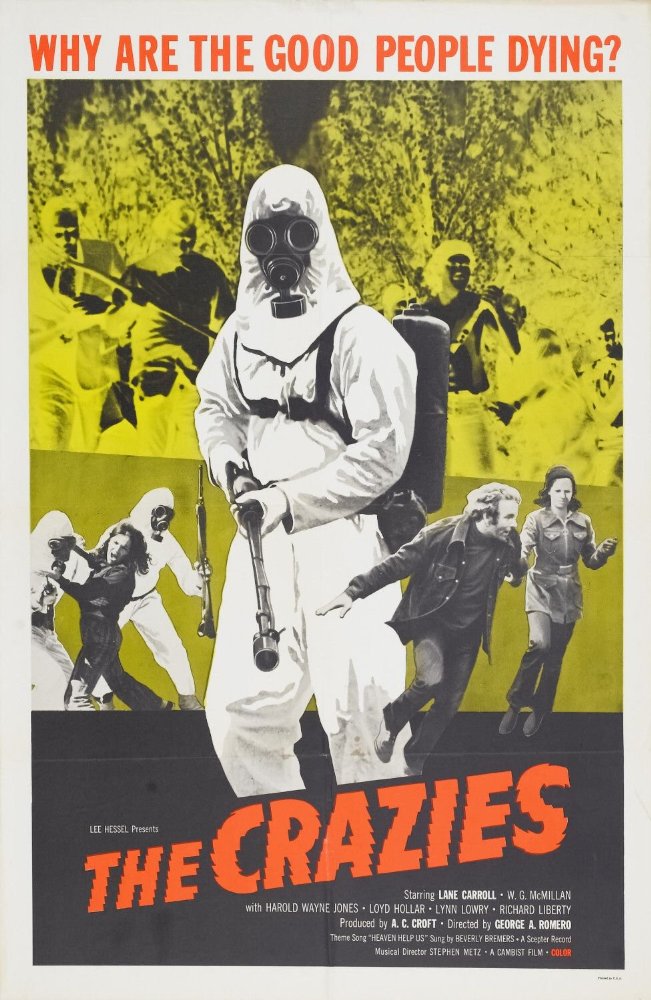 But having lost out on the windfall from his first film, by then a cultural classic that somehow slipped into the public domain by mistake, he made his bid to reclaim his title with his fantastically handmade Grand Guignol masterpiece, Dawn of the Dead (1978). Having taken the concept of the zombie (never referenced as such in that film) away from its voodoo roots and into entirely new directions, complete with rules that have stuck (“You kill the brain, you kill the ghoul.”) even he seemed to understand then that being “the father of the modern zombie” would be his lot in life. This despite his hopes to more directly indulge his love of Powell & Pressberger, and move beyond. He would follow up with 1985’s Day of the Dead, 2005’s Land of the Dead (based in part upon his DC comic book series, Toe Tags), 2007’s Diary of the Dead, and his final film, 2009’s Survival of the Dead.
But having lost out on the windfall from his first film, by then a cultural classic that somehow slipped into the public domain by mistake, he made his bid to reclaim his title with his fantastically handmade Grand Guignol masterpiece, Dawn of the Dead (1978). Having taken the concept of the zombie (never referenced as such in that film) away from its voodoo roots and into entirely new directions, complete with rules that have stuck (“You kill the brain, you kill the ghoul.”) even he seemed to understand then that being “the father of the modern zombie” would be his lot in life. This despite his hopes to more directly indulge his love of Powell & Pressberger, and move beyond. He would follow up with 1985’s Day of the Dead, 2005’s Land of the Dead (based in part upon his DC comic book series, Toe Tags), 2007’s Diary of the Dead, and his final film, 2009’s Survival of the Dead.
In this series, Romero didn’t just establish the mindless flesh-eating zombie as the most inherently political of all monsters, he utterly ran with the notion. Despite that he never set out to be a horror icon, Romero took full advantage of the fact that the metaphors of the genre allow for the level of social commentary that would play as a sledge hammer in straight drama.
Nearly every project he was involved with fused his left wing worldview with the ingrained moralism of his Catholic upbringing, resulting in a unique and sometimes uncomfortable tension in his work. The Romero filmography, filled out with such notables as Creepshow, Monkey Shines and The Dark Half, is one of a true independent artist looking to venture forth from his native Pittsburgh and the zombies he raised there, yet always happily willing to return to that. Even in his studio efforts, there was a lot of catch-as-catch-can, a sharp and weirdly appealing scruffiness that endeared him to both horror hounds and cinephiles. Everyone loved George, that old hippy Santa giving out entrails instead of toys. But in his world, what was the difference? What his warped yet right perseverance and visions brought to the movies was something much needed, something that was in its own imperfect way… perfect.
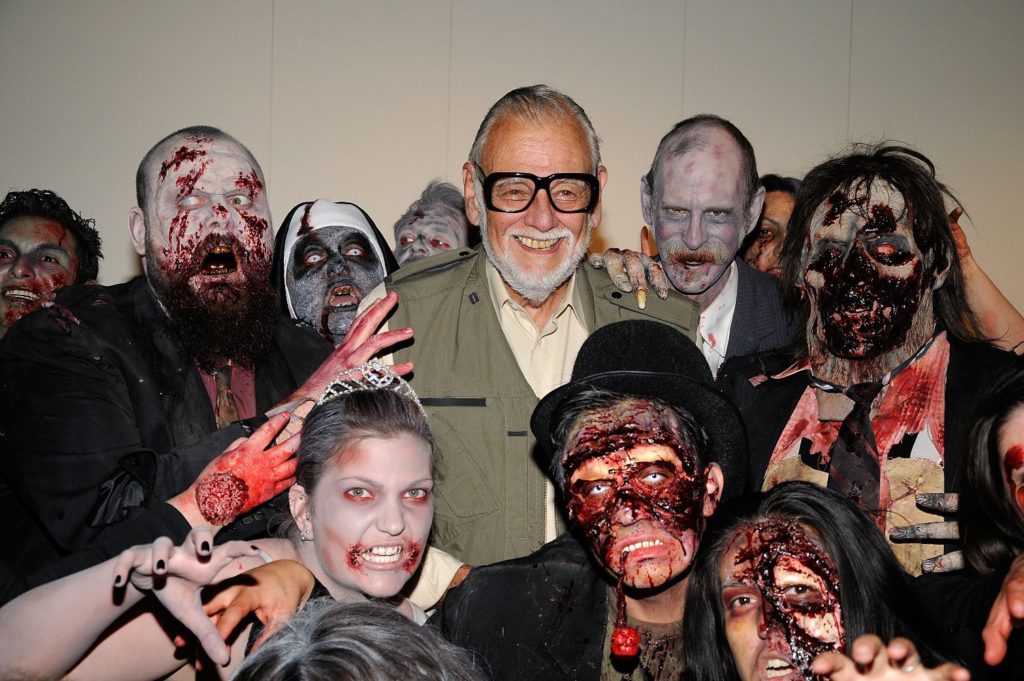
Paul Hibbard
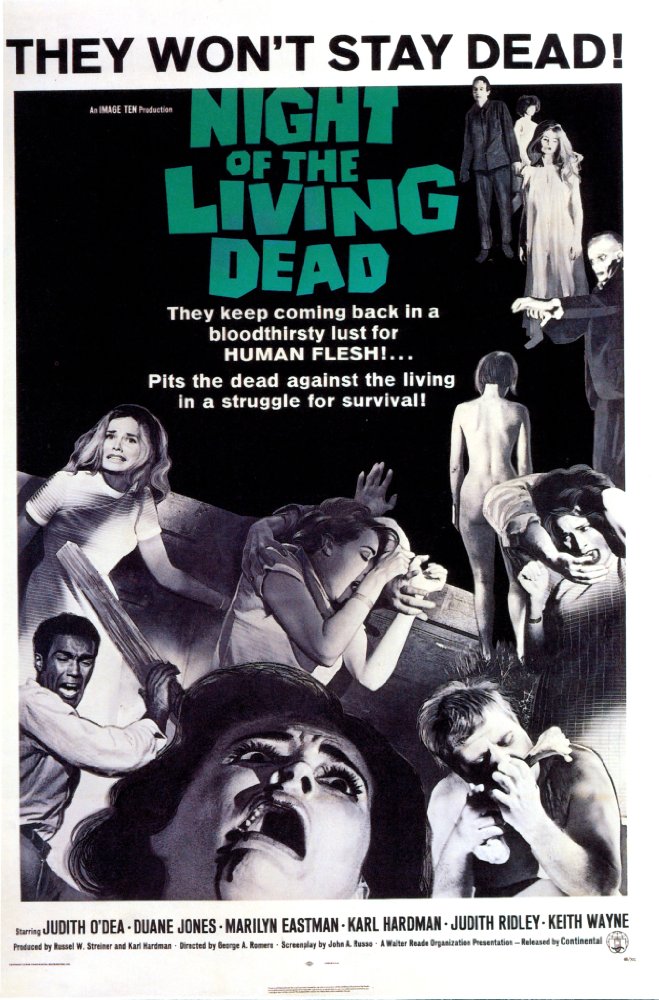 George Romero started his career in a place where a lot of crew people end. He was doing commercials, and landed a “Picture Picture” segment for Mr. Roger’s Neighborhood; he was making a decent living. However, he had such a passion for film and such a need to impact people both viscerally and intellectually that he went into debt directing his masterpiece, and with all due respect to the sequels, still his best movie, Night of the Living Dead.
George Romero started his career in a place where a lot of crew people end. He was doing commercials, and landed a “Picture Picture” segment for Mr. Roger’s Neighborhood; he was making a decent living. However, he had such a passion for film and such a need to impact people both viscerally and intellectually that he went into debt directing his masterpiece, and with all due respect to the sequels, still his best movie, Night of the Living Dead.
A film that on the surface just looked like a combination of Rio Bravo and Carnival of the Souls, the film had much more going for it. Way before its time both in its usage of gore and violence, but also in casting a lead black male protagonist. Romero always swore Duane Jones was the best actor, and he being black was inconsequential, but watching that film today, especially in the final 10 minutes, it seems way too happy of an accident that the commentary just plays itself out the way it does.
Romero went on to direct sequels that he openly admit were fill of commentary: Dawn of the Dead (consumerism), Day of the Dead (industrial war machine of America) and Land of the Dead (economic disparity). He also directed some very underrated non-zombie films, his best being Martin. And his teaming up with Stephen King brought us both Creepshow and The Dark Half.
Romero lived a full life and always seemed to be full of such wit and intellect in interviews along with always having a smile on his face. This is truly a great loss.
